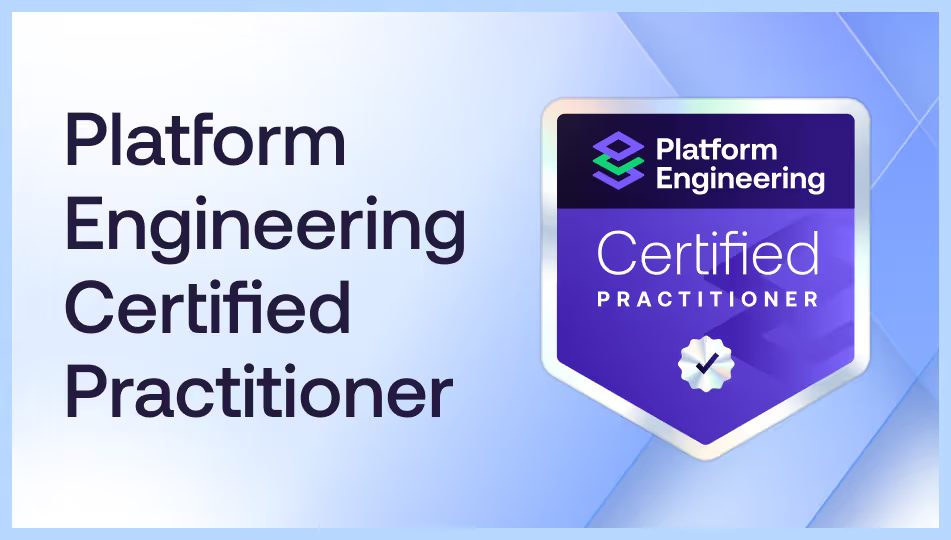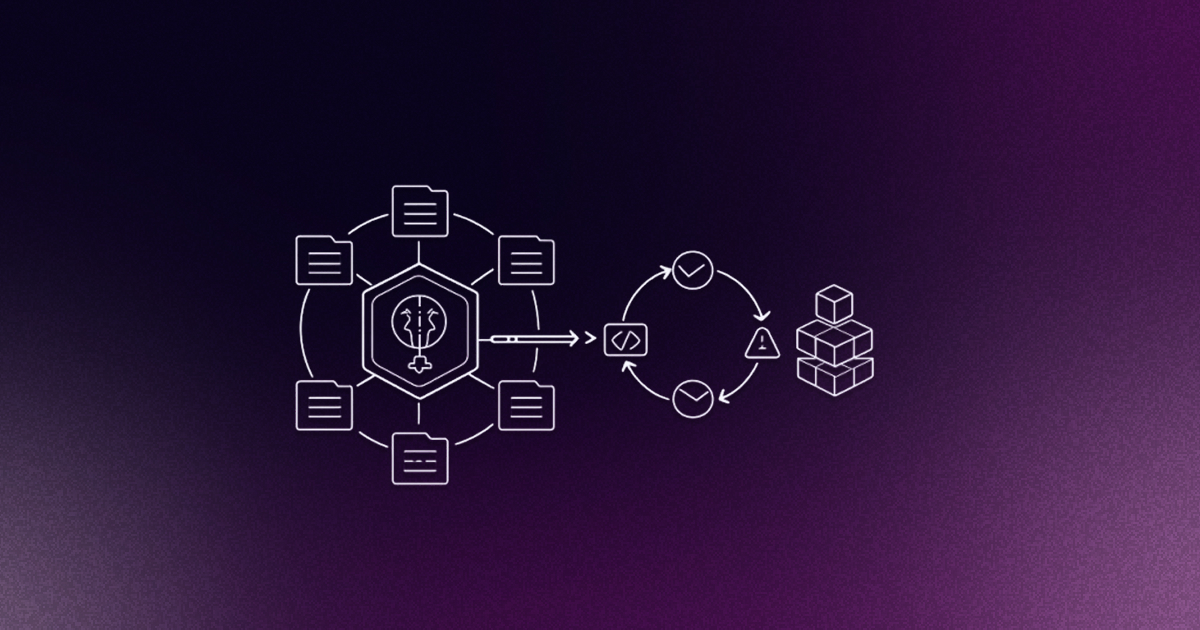Let's be honest. When you hear "platform engineering", your mind probably invokes images of tech giants like Google, Netflix, or Sixt, bustling with hundreds of developers and entire departments dedicated to building their internal developer heaven. We're talking golden paths, shiny internal portals, and infrastructure automations that can build entire companies.
But what if I told you that platform engineering isn't just for the big kids on the block. What if, in fact, it could be your startup's advantage, its secret weapon for punching above its weight?
At its heart, platform engineering is simply about making life easier for your developers. Imagine a world where every team has to invent their own wheel, their own deployment process, their own monitoring setup, their own security checks. Now imagine a world where all that "reinventing" is replaced by self-service capabilities, with security, observability, and governance already baked in. That's platform engineering.
For a startup, this doesn't mean you need a fancy Internal Developer Platform (IDP) by next Tuesday. It means strategically investing in just enough standardization to slash friction and boost your delivery speed, all without sacrificing that crucial startup flexibility.
Differentiating pain points: Startups vs. enterprises
Now you might be thinking, "Okay, platform engineering helps developers. But surely Google's problems aren't the same as my 30 person startup's, right?" And you'd be absolutely right. While the heart of platform engineering is making life easier for your developers beats for everyone, the specific aches and pains, and how you fix them, look wildly different.
For the big enterprises the pain points often comes from the sheer size of them. They have deeply ingrained legacy systems, layers of bureaucracy, and plenty of specialized teams. Their stakeholders are vast, from the compliance officers who live by the book, to those long standing department heads who've always done things a certain way, to the security teams who need everything locked down tight. Budgets can be substantial, but are often allocated with strict oversight, leading to slower adoption of new technologies. Platform engineering in this context typically focuses on standardizing a fragmented landscape, migrating away from outdated infrastructure, ensuring governance, and breaking down organizational silos that restrain collaboration. The goal is to bring order to chaos, often with a primary focus on risk reduction, cost optimization, and ensuring stability across a vast and complex ecosystem.
For startups, the pain points are born from rapid growth, limited resources, and the constant need for agility. Stakeholders are typically fewer, primarily engineering leads, product managers, and individual developers, all aligned on the imperative for speed and innovation. Budgets are significantly smaller, demanding a lean and highly practical approach to investment. The primary challenges revolve around maintaining velocity as complexity increases, preventing early successes from turning into technical debt, and efficiently onboarding new talent into a dynamic environment.
Platform engineering for startups is less about large scale standardization or mitigating decades of technical debt, and more about empowering small, fast-moving teams to punch above their weight by providing guardrails, contributing to faster product delivery and ultimately, happier engineers.
The startup's heartbreak: When "move fast" becomes "break everything"
Startups thrive on momentum. You live for those rapid iterations, those tight feedback loops, that lean-and-mean execution. And it's exhilarating! But every successful sprint, every new feature, every new hire… it adds layers of complexity. More services. More environments. More brilliant engineers joining your ranks.
Suddenly, that slick deployment script your early team loved? It's now tribal knowledge trapped in someone's head, or worse, a brittle, undocumented mess. I've seen this exact scenario play out countless times in my consulting work. I recall one client I helped, an early-stage SaaS company, where they had four microservices, each with its own unique, manually-run, and utterly undocumented deployment process. Development velocity was constantly throttled by the fear of breaking production. This wasn't just an inconvenience; it was a daily, existential drain on engineering resources.
This is precisely where platform engineering, when approached pragmatically, delivers incredible leverage. It's about a fundamental shift in your mindset; instead of thinking, "How do we survive this sprint?", you start asking, "How do we permanently remove this friction?" This isn't just about efficiency, it's about engineering happiness and long-term investment organizational health.
The lean platform blueprint: Battle-tested strategies for startup growth
Through broad experience with a diverse range of early-stage and rapidly growing engineering teams, I've identified a few high-leverage plays that consistently change the game. These aren't abstract theories; they're battle-tested strategies for tangible impact, built on real-world constraints and opportunities.
1. Listen to the grumbles: Identify the real developer bottlenecks
Want to build something truly impactful? Start by listening. In my experience, the biggest wins come from solving the most acute pain points. At a company I advised to, onboarding a new engineer took a staggering two full weeks. Environment setup involved a six-step manual process that frequently failed due to subtle dependency issues or version mismatches. It was a huge drain on senior engineers who had to babysit the process. The solution wasn't a complex platform; it was a focused effort to eliminate a massive developer frustration by streamlining environment provisioning. I always encourage teams to ask:
- "What genuinely slows you down most consistently?"
- "What tasks make you groan because they feel so repetitive and error-prone?"
- "Where do things just… break, again and again, leading to wasted time?"
Let these specific frustrations be your compass. These are your prime opportunities for targeted platform intervention.
2. Building with guardrails: Standardize smartly, don't suffocate creativity
Standardization is a superpower, but too much, too soon, feels like trying to run through quicksand. Start off with a minimal set of reusable components rather than rigid mandates and focus on establishing "golden paths" that developers want to use because they simplify their lives. For instance, I advocate for:
Reusable Terraform Modules: For consistent cloud infrastructure across services (e.g., a standard Kubernetes ingress, a database setup, or a serverless function pattern). This ensures security defaults and cost optimizations are baked in from the start.
Robust GitHub Actions or GitLab CI Workflows: Templatizing common CI/CD patterns (build, test, deploy, security scans). This eliminates teams inventing their own, often inconsistent, pipelines.
Flexible Helm Charts: For standardized Kubernetes deployments, providing sane defaults for common applications while allowing overrides for specific needs.
Here's my litmus test: If a new team can copy-paste a template, change a few variables, and confidently ship something valuable in under 10 minutes, you're doing it exactly right. These are guardrails, not walls. The goal is to reduce cognitive load and prevent accidental misconfigurations, not stifle innovation.
3. Build just-enough internal tools: The "Wow, that was easy" moments
You absolutely do not need a custom-built developer platform on day one. Think small, impactful tools that solve specific, acute problems. I've seen tremendous leverage from surprisingly simple solutions.
For example, I once built an automation on top of Jenkins to streamline project creation. Previously, setting up a new service involved multiple manual steps: creating a Git repository, configuring CI/CD jobs, setting up deployment manifests, and ensuring all the right permissions were in place. This was time-consuming and prone to human error. My solution was a Jenkins Pipeline that took a few parameters (e.g., service name, desired language/framework). It would then automatically:
- Scaffold the project repository from a pre-defined template.
- Provision the necessary CI/CD pipelines in Jenkins.
- Generate initial deployment manifests for Kubernetes.
- Set up basic monitoring and logging configurations.
This automation significantly reduced the time and effort required to kickstart new projects, ensuring consistency and compliance from the very beginning. These weren't massive engineering feats, but they generated immediate "Wow, that was easy!" moments and freed up valuable developer time.
4. Your platform's report card = Your onboarding experience
Want to instantly gauge your platform's maturity? Watch how easily new developers ramp up. Do they get stuck endlessly setting up environments? Are they frantically searching for deployment steps? Are they waiting days for secrets or permissions? These are direct signals of platform debt.
Based on my observations, I strongly recommend implementing:
- A dedicated "dummy" service or sandbox environment where new hires can safely practice deployments, make their first change, and get familiar with the entire CI/CD flow without fear of breaking anything.
- Crisp, clear internal documentation with simple diagrams and short video walkthroughs (using tools like Loom or OBS) to explain complex workflows.
5. Treat your platform like your best product
Every platform decision you make should tie back to concrete outcomes: improved developer experience, blazing velocity, or rock-solid risk reduction. I emphasize adopting a "product manager" mindset for your internal platform. Constantly ask yourself (and your internal users: the developers!):
- "How many hours are we genuinely saving per developer, per week, with this new tool or standard?"
- "Are our internal tools actually being adopted, or are developers secretly building their own workarounds because the platform isn't meeting their needs?"
- "Where are our developers still feeling friction or getting stuck, even after our platform efforts?"
Embracing this "product-thinking" mindset ensures your platform continuously improves based on real, measurable feedback and developer needs, not just assumptions or an outdated roadmap. It's about iteration and responsiveness, just like your external products.
When to formalize: Is it time for a dedicated platform team?
You certainly don't need a formal platform team when you're a scrappy five-engineer startup. But here's the kicker: when you hit around 30 engineers, platform work becomes someone's full-time job whether you explicitly realize it or not. The cost of not having a platform team begins to outweigh the cost of having one.
Look for these critical signs that I've observed signal this tipping point:
High "Snowflake" Environment Count: Every environment (dev, staging, production) is unique and difficult to replicate, leading to "it works on my machine but not in prod."
DevOps Becoming a Helpdesk: Your infrastructure or DevOps engineers are constantly battling fires, manually setting up environments, or granting ad-hoc permissions instead of building automation.
Recurring Deployment Friction: Deployments are unpredictable, fail frequently, or require manual steps and constant oversight.
Onboarding Time Spikes: New engineer ramp-up time consistently stretches beyond a week of frustration and low productivity.
Don't panic! Start small. My typical recommendation is to begin by assigning 20-30% of a strong senior engineer's time to focused platform work. Let them tackle those burning pain points and prove the ROI. Then, expand based on demonstrated need and the clear value it brings to developer velocity and organizational stability.
Don't wait for the breaking point
Platform engineering isn't about chasing perfection or building the most elaborate system. It's about building momentum and leverage. Focus on the recurring pain points that drain your team's energy. Start incredibly small and iterate. And most importantly, treat your developers' experience as a first-class product, not just a side task.
I've personally witnessed startups slash onboarding time in half, dramatically reduce deployment friction, and send their shipping velocity soaring – all without needing massive budgets or a sprawling internal team. These are the kinds of wins that translate directly to faster product delivery and happier engineers.
If you're starting to feel the growing pains of success, if complexity is threatening to slow you down, it might just be the perfect time to give platform engineering a prominent seat at your strategic table. It's not just an engineering initiative; it's an investment in sustainable speed and a resilient future for your startup.












